
May 24, 2008

The above is a new species with the common name of the “shocking pink dragon millipede” and the scientific Latin name of Desmoxytes purpurosea. It was first found on 28 August 2006, and first described in Zootaxa 1563: 31–36, 2007.
It’s May. The end of May 2008. But apparently there is one more “top ten list” for 2007 that needs to be published.
The International Institute for Species Exploration (IISE) has announced their list of the top ten new species described in 2007, which includes at least a couple extinct animals, as well. The media appears to be confusing this list of newly described species with newly discovered species, so let’s clarify it a bit.
The exact release says: “Each year the IISE announces a list of the Top 10 New Species for the preceding calendar year. The Top 10 new species described in 2007, announced on May 23, 2008, are listed below….”
The press released announcement was made by the IISE at Arizona State University and an international committee of taxonomists (those scientists responsible for species exploration and classification) as a way to promote their call for species conservation.
A close look at this list will quickly show that these “new species” were not all “discovered” last year, although they may have been “described” in 2007. It was created, obviously, as a way to get some media attention to this organization’s cause. Considering the list includes a new frog known only from one specimen that was found around 1860, I wonder as to the actual dates of discovery for the rest. Let’s look a little deeper.
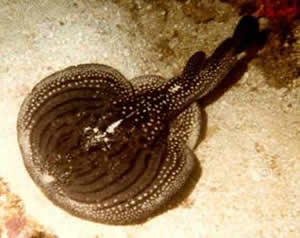
For example, on the list is an ornate sleeper ray dubbed “Electrolux.” The ornate sleeper ray, called Electrolux addisoni, whose name reflects the vigorous sucking action displayed on the videotape of the feeding ray, may rival a well-known electrical device used to suck the dirt from carpets. Electrolux addisoni is endemic to the east coast of South Africa, and was first identified to the taxonomy authors in 1984 by photographing divers. It was subsequently sighted, photographed and videographed by divers, but it was not until 2003 that the authors were finally able to obtain specimens for study. The species is named after Mark Addison, who collected the holotype.
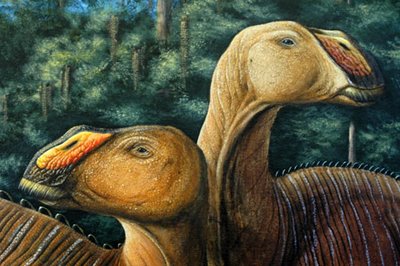
Also on the list is a 75-million-year-old giant duck-billed dinosaur, a hadrosaur (Gryposaurus monumentensis), first discovered in 2002, in southern Utah by a team from the Alf Museum, a California-based paleontology museum on the Webb High School campus in Claremont, California. The dinosaur was first described in the literature in 2007.
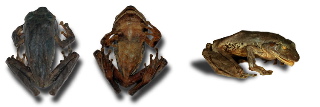
As mentioned above, one of the newly described species is a Sri Lanka’s extinct shrub frog (Philautus maia). This species was described from a single female museum specimen collected around 1860. It and a number of related species from Sri Lanka are almost certainly now extinct. Although described in 2007, it now goes down in history as being one of those new species discovered in a museum, but actually found in the field, in this case, almost a 150 years ago.

The discovery of the central ranges taipan (Oxyuranus temporalis) resulted from the collection of a single subadult female from the east of the Walter James Range, Western Australia, on 22 September 2006, by M. Hutchinson. It is perhaps one of the most venomous known snake species.

This jellyfish (Malo kingi) was named after its victim. American tourist Robert King, 44, was stung while swimming off Port Douglas in March 2002, and died early in April 2002, from complications. Scientists in north Queensland found that the killer was a previously unknown jellyfish and described it as such in 2007.
Other species on the list include:
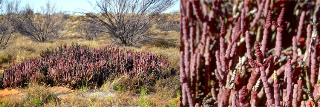
From the plant kingdom is the “Michelin Man” plant (Tecticornia bibenda), a succulent plant in Western Australia that resembles the Michelin tire man.
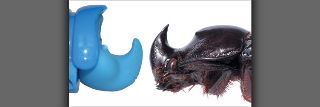
In the category of life imitating art is a “Dim” rhinoceros beetle (Megaceras briansaltini) that, according to the author, looks like the Dim character from the Disney film A Bug’s Life.

This large and charismatic fruit bat species (Styloctenium mindorensis) is known only from the Philippine island of Mindoro. It is only the second known species in the genus.
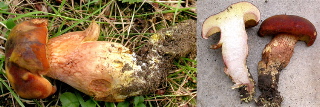
The new mushroom species (Xerocomus silwoodensis) was discovered on Silwood Campus, a campus of Imperial College, London, although it is also found elsewhere (two additional sites in England and one each in Spain and Italy).; Not having any common name, Xerocomus silwoodensis is a non-edible relative of another fungus popularly known as Penny Bun, a velvety rusty coloured variety widely used in French cooking. The Silwood scientists discovered their eponymous fungus growing behind the halls of residence on campus and wrote about it in the journal, Mycological Research.
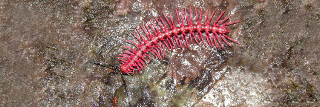
This new species is named the shocking pink dragon millipede (Desmoxytes purpurosea) and is found in a unique ecosystem, the Hup Pa Tard, a Permian limestone cavern covered with vegetation dominated by the palm Arenga pinnata. This palm species has its vernacular Thai name as “Tard or Taw” which is the origin of the name of the site. These millipedes are highly variable in appearance and coloration (thus the “shocking pink” name), but this shocking pink stands apart. The authors suggest that its gaudy coloration and habits (it sits openly on the ground and vegetation during the day) probably indicates to would-be predators that it is not edible (spiny, toxic, and poisonous).
Cryptozoologically interesting, these millipedes share their habitat with other rare animals also reported living here, such as the Siamese fireback pheasant (Lophlura diardi), various kinds of rare squirrels, and the serow (Capricornis sumatraensis), famous as the source of Sir Edmund Hillary’s second newly made Yeti skullcap.
Desmoxytes purpurosea was first collected in 2006, and described in 2007.
According to Professor Quentin Wheeler, an entomologist and director of ASU’s International Institute for Species Exploration, “The international committee of taxon experts who made the selection of the top 10 from the thousands of species described in calendar year 2007 is helping draw attention to biodiversity, the field of taxonomy, and the importance of natural history museums and botanical gardens in a fun-filled way.”
“Charting the species of the world and their unique attributes are essential parts of understanding the history of life and is in our own self-interest as we face the challenges of living on a rapidly changing planet,” he added.
The taxonomists are also issuing a SOS – State of Observed Species report card on human knowledge of Earth’s species. In it, they report “that 16,969 species new to science were discovered and described in 2006.”
(Considering that the list for 2007 is only of newly described 2007 species, I would assume that the 16,969 species are merely of “described,” not “discovered” species for 2006.)
About Loren Coleman
Loren Coleman is one of the world’s leading cryptozoologists, some say “the” leading living cryptozoologist. Certainly, he is acknowledged as the current living American researcher and writer who has most popularized cryptozoology in the late 20th and early 21st centuries.
Starting his fieldwork and investigations in 1960, after traveling and trekking extensively in pursuit of cryptozoological mysteries, Coleman began writing to share his experiences in 1969. An honorary member of Ivan T. Sanderson’s Society for the Investigation of the Unexplained in the 1970s, Coleman has been bestowed with similar honorary memberships of the North Idaho College Cryptozoology Club in 1983, and in subsequent years, that of the British Columbia Scientific Cryptozoology Club, CryptoSafari International, and other international organizations. He was also a Life Member and Benefactor of the International Society of Cryptozoology (now-defunct).
Loren Coleman’s daily blog, as a member of the Cryptomundo Team, served as an ongoing avenue of communication for the ever-growing body of cryptozoo news from 2005 through 2013. He returned as an infrequent contributor beginning Halloween week of 2015.
Coleman is the founder in 2003, and current director of the International Cryptozoology Museum in Portland, Maine.
Filed under Abominable Snowman, Breaking News, Cryptomundo Exclusive, Cryptotourism, CryptoZoo News, Cryptozoologists, Cryptozoology, Evidence, Expedition Reports, Extinct, Eyewitness Accounts, Forensic Science, Fossil Finds, Museums, New Species, Photos, Weird Animal News, Yeti